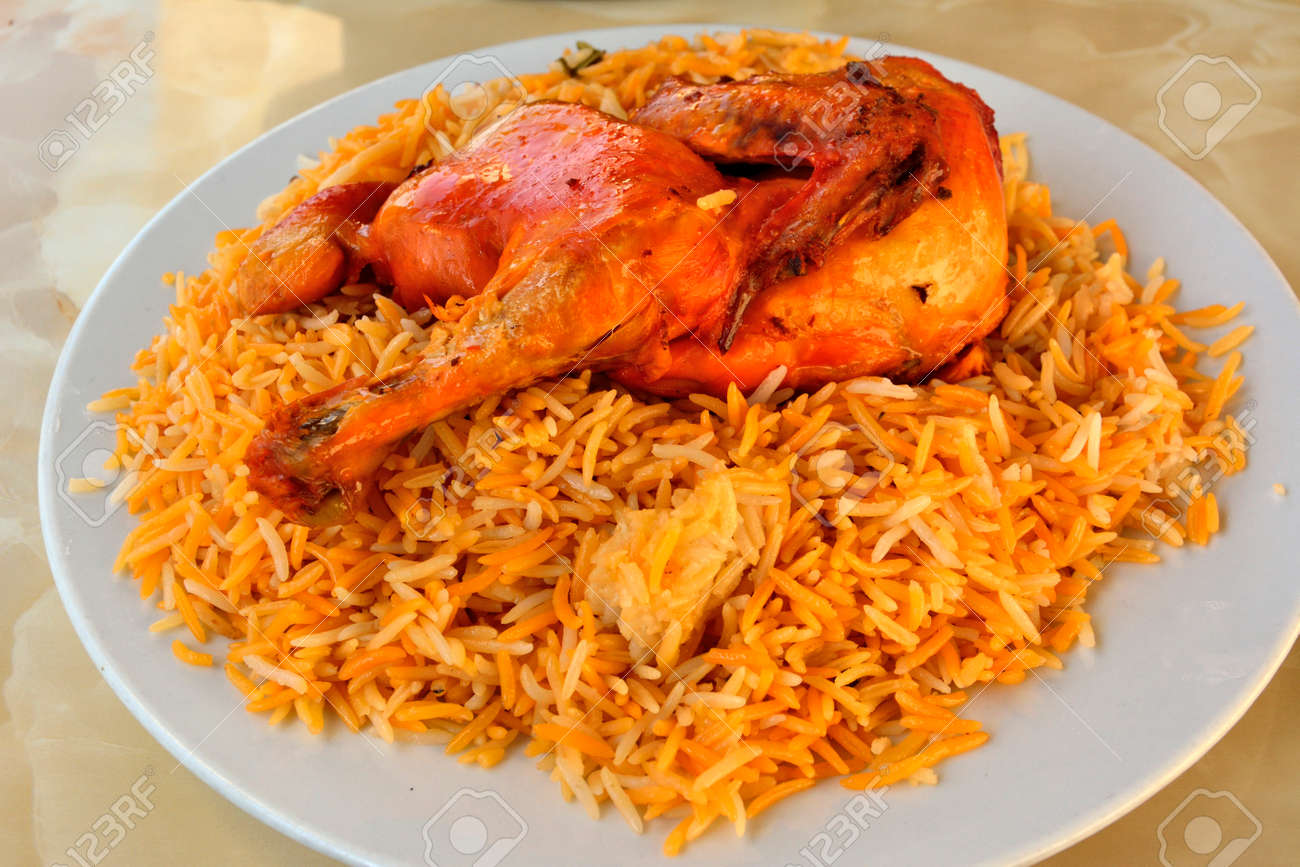Saudi Arabian cuisine is shaped by the country's diverse landscapes and regions. The variety in environment, geography, and culture across this vast nation has resulted in a rich assortment of dishes. Each region—Central, Eastern, Southern, and Western—brings its own unique flavours to the table. Additionally, Saudi Arabia's location along major trade routes has introduced a range of spices, further enhancing the culinary diversity.
Saudi Arabian cooking is deeply influenced by both native Arab traditions and Islamic culture. For example, dates are a key part of breaking the fast after Ramadan. Many of the ingredients used, such as wheat, dates, ghee, meat, fish, and vegetables, are sourced locally. These ingredients are used to create a variety of delicious dishes that are closely tied to Saudi customs and traditions.
These meals are often enjoyed during festive seasons, Hajj, special occasions, weddings, and when celebrating the birth of a child. Offering these dishes to guests is a way of showing generosity and showcasing the well-known hospitality of the Saudi people. Many of these traditions continue to be upheld today.
The Rich Tapestry of Saudi Arabian Flavors
Saudi cuisine is known for its rich and aromatic flavours, thanks to the generous use of various spices. Saffron, with its golden colour and delicate taste, is often used to add a touch of luxury to dishes. Cinnamon brings a gentle sweetness to meat dishes, while dried black lime adds a unique tangy flavour. Asafoetida, a resinous spice, contributes a strong aroma, enhancing the depth and complexity of traditional recipes.
Cooking techniques in Saudi Arabian cuisine harken back to age-old methods used for generations, reflecting the need to preserve foods in a harsh desert environment.
Slow cooking in a tandoor (underground clay oven) or over an open fire is common, and this gentle, patient approach to cooking meat until it's tender and flavorful, is a hallmark of the cuisine. Roasting and baking are other traditional techniques that imbue Saudi dishes with a distinctive smoky aroma and taste.
Saudi Arabia's rich culinary heritage is a feast for the senses, deeply rooted in its culture and traditions. From aromatic dishes like Kabsa and Mandi to sweet treats like Kunafa and Ma’amoul, the flavors reflect the warmth of Arabian hospitality. During Saudi Arabia festivals, traditional foods take center stage, offering visitors a chance to savor authentic local flavors while experiencing vibrant cultural celebrations. These festivals are perfect for indulging in the country's diverse cuisine and connecting with its heritage.
10 iconic dishes from Saudi Arabia's rich culinary traditions.
Kabsa

Kabsa, often regarded as the national dish of Saudi Arabia, is a delicious mixed rice dish typically made with basmati rice, meat, vegetables, and a blend of spices. Its variations across different regions highlight the country's rich culinary diversity and the adaptability of its cuisine. With its aromatic spices and hearty mix of ingredients, Kabsa perfectly captures Saudi Arabia's passion for flavorful, satisfying meals.
Jareesh
Jareesh is a traditional dish from the Arabian Peninsula, often described as a cracked wheat stew similar to porridge. It highlights the resourcefulness of Saudi Arabian cuisine, where basic ingredients like wheat and meat are transformed into a hearty and comforting meal. This dish emphasizes the importance of grains in the Saudi diet and showcases their ability to create a variety of textures and flavours.
Mutabbaq

Mutabbaq, meaning 'folded' in Arabic. Originally from Yemen, this savoury stuffed pastry has become a beloved street food in Saudi Arabia. It highlights the Middle Eastern and Central Asian influences on Saudi cuisine, where stuffed pastries are a common delight. The fillings vary, from meat and vegetables to cheese, showcasing the dish's versatility and the diverse flavours of Saudi cooking.
Mandi
Mandi, a dish rooted in Bedouin cooking traditions, is one of Saudi Arabia's most beloved meals. The name 'Mandi' comes from the Arabic word 'nada,' meaning 'dew,' which reflects the tender, moist texture of the meat. This ancient cooking technique involves slow-cooking meat and rice in a tandoor—a pit in the ground covered during cooking. This method, developed to adapt to the harsh desert environment, highlights the importance of meat, particularly lamb, in Saudi cuisine.
Harees
Harees is a dish rich in history and tradition, having been a staple of Arabian cuisine for centuries. It is made from ground wheat and meat, usually chicken or lamb, which are slow-cooked together until they form a smooth, porridge-like consistency. The grains soak up the flavours of the meat, and the slow cooking process tenderizes the proteins, creating a hearty, mildly spiced dish that is both satisfying and comforting.
Saleeg
Saleeg, a traditional dish from the Hejaz region in western Saudi Arabia, is a creamy rice meal typically prepared with chicken and milk. This dish highlights the significance of dairy products, like milk, in Saudi cuisine, reflecting the country’s long-standing livestock farming traditions. Its comforting and rich nature reflects Saudi Arabia's warm hospitality and fondness for hearty meals.
Shakshouka

Although Shakshouka originally comes from North Africa, its widespread popularity in Saudi Arabia highlights the fluid nature of Middle Eastern cuisine. This dish, featuring eggs poached in a spicy tomato sauce, showcases the adaptability of Saudi culinary traditions, as they embrace and reinterpret dishes from other cultures, making them their own.
Al-Kabsa
Al-Kabsa, a variation of the traditional Kabsa, highlights the importance of regional differences and individual preferences in Saudi cuisine. While the ingredients are similar to Kabsa, subtle changes in spices or cooking techniques give Al-Kabsa its distinct character, showcasing the diversity within Saudi culinary traditions.
Tamees
A traditional flatbread is a staple in Saudi cuisine. Baked fresh daily, it’s often enjoyed with honey and ghee for breakfast or served alongside dips, curries, and stews throughout the day. The popularity of Tamees highlights the importance of bread in Saudi Arabian cuisine and reflects the age-old baking traditions passed down through generations.
Conclusion
Saudi Arabian cuisine has a vibrant and diverse reflection of the country's rich history, geography, and cultural influences. From the aromatic spices to the age-old cooking techniques, every dish tells a story of tradition, adaptability, and resourcefulness.
Whether it's the hearty Kabsa, the comforting Jareesh, or the flavorful Mutabbaq, each meal offers a unique taste of the region's culinary heritage. The importance of hospitality, religious customs, and regional differences is evident in every bite, making Saudi cuisine a true celebration of flavours and traditions that continue to thrive today.
Frequently Asked Questions
What are the key influences on Saudi Arabian cuisine?
Saudi Arabian cuisine is shaped by its diverse landscapes, regional traditions, and historical trade routes. Native Arab customs, Islamic culture, and the introduction of various spices through trade routes have all contributed to the rich culinary diversity found in the country.What makes Kabsa Saudi Arabia's national cuisine?
Kabsa is a flavorful rice dish featuring basmati rice, meat, vegetables, and a blend of aromatic spices.Its widespread popularity and regional variations make it a defining dish of Saudi Arabia, representing the country’s love for hearty, aromatic meals.What ingredients are commonly used in traditional Saudi dishes?
Many traditional Saudi dishes use local ingredients such as wheat, dates, ghee, meat (especially lamb and chicken), fish, and vegetables. These ingredients are often combined with spices like saffron, cinnamon, and dried black lime to create rich, flavorful meals.How do cooking techniques in Saudi Arabia reflect the country’s environment?
Saudi cooking techniques, such as slow-cooking in a tandoor (underground oven) or over an open fire, were developed to preserve food in the harsh desert climate. These methods not only tenderize the meat but also give dishes a distinctive smoky flavor.What role does bread play in Saudi Arabian cuisine?
Bread is a staple in Saudi cuisine, with Tamees being a popular flatbread. It is enjoyed with honey and ghee for breakfast or served alongside stews, curries, and dips throughout the day, showcasing the importance of baking traditions in the region.How does Saudi Arabian cuisine reflect the country's hospitality?
Saudi Arabian cuisine is deeply tied to its traditions of hospitality. Dishes are often prepared for special occasions like weddings, religious holidays, and family gatherings, with meals being a way to show generosity and welcome guests into homes.









